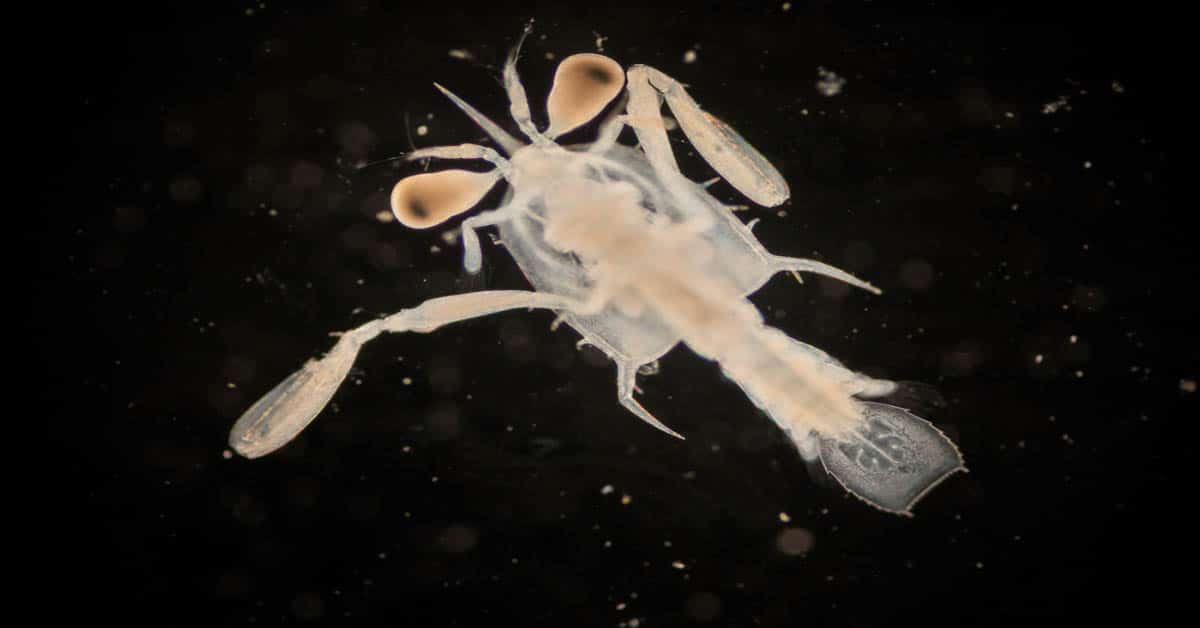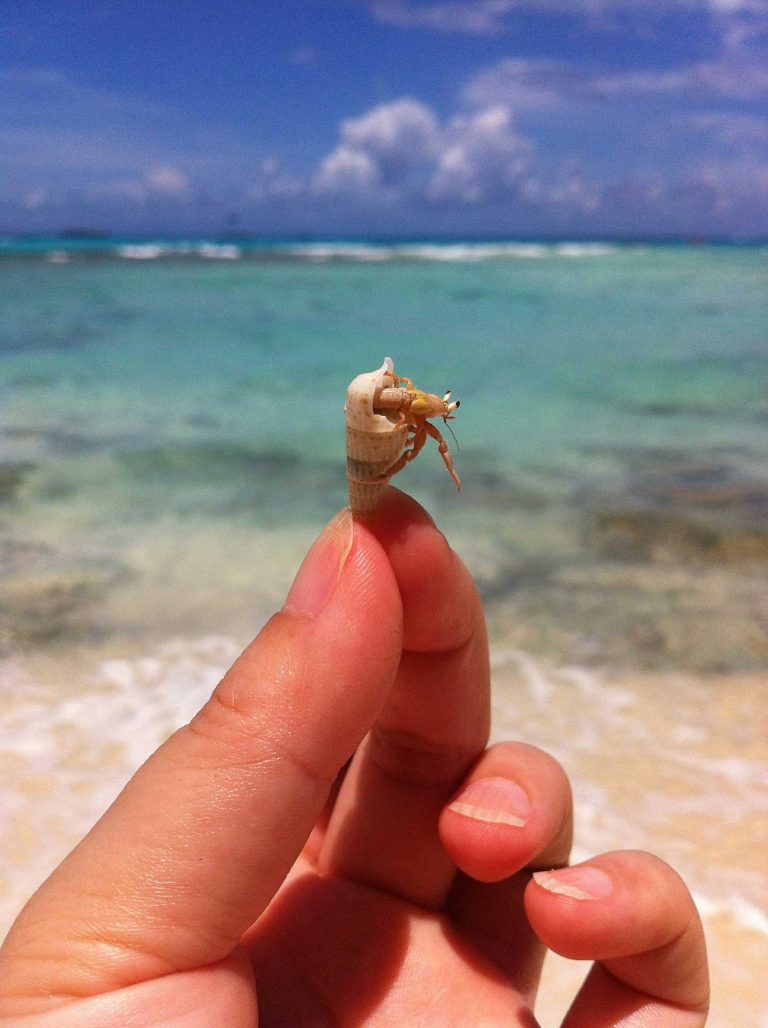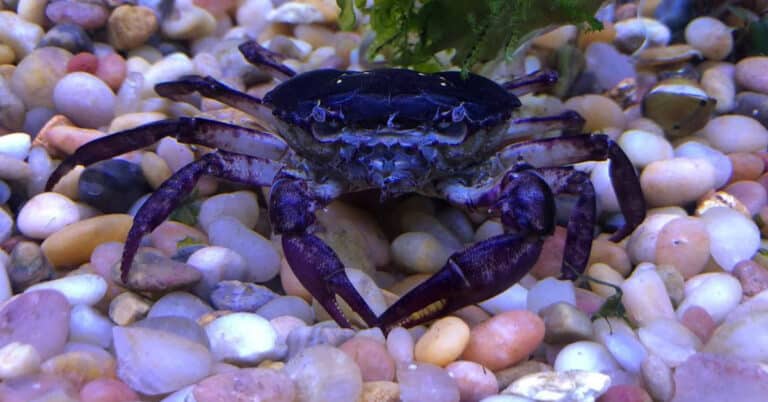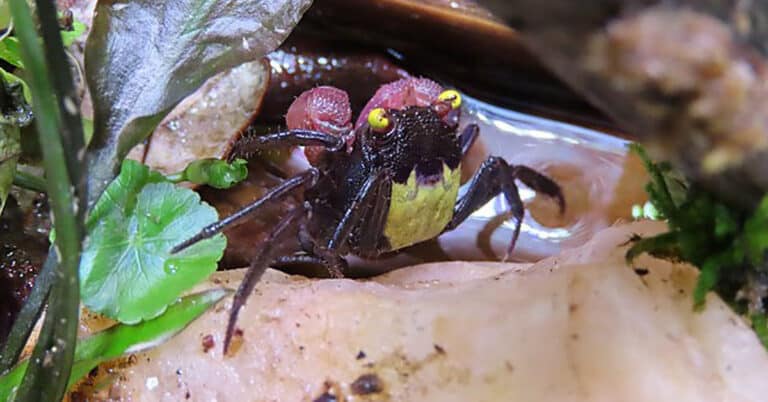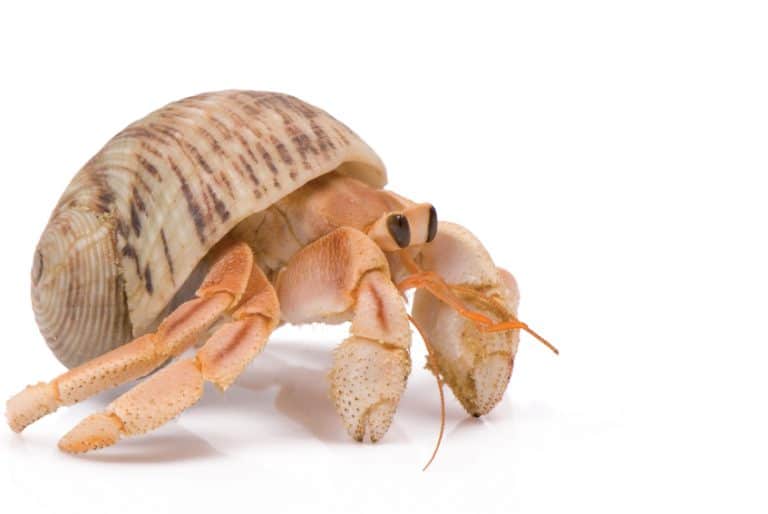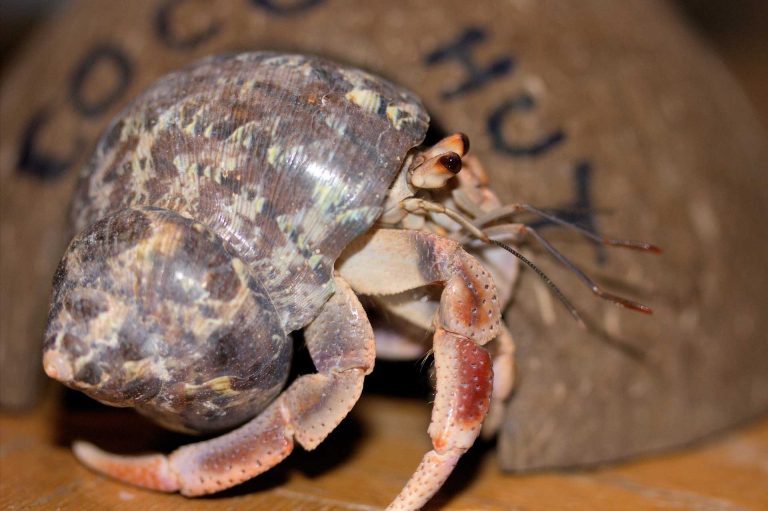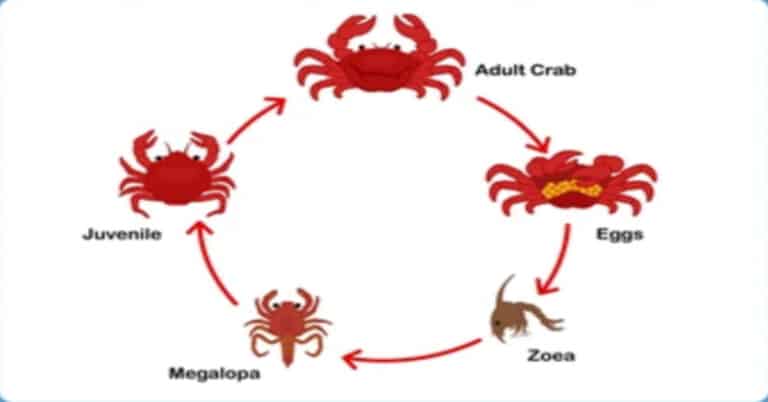Crab Larvae – Unique & Mysterious Development
Crabs are fascinating creatures. They come in over 6,700 species and live in various habitats. While some of them prefer freshwater, others like the salty ocean environment. Some live entirely on land, yet they are constantly close to the water of some kind.
Because they maintain the environment, crabs are highly significant creatures. Additionally, they are food for various other animals, including humans.
Have you ever wondered what crab larvae look like? Or what developmental stages do those creatures go through from birth to death? In the article below, we will explore the larvae of crabs as well as the traits of crabs themselves.
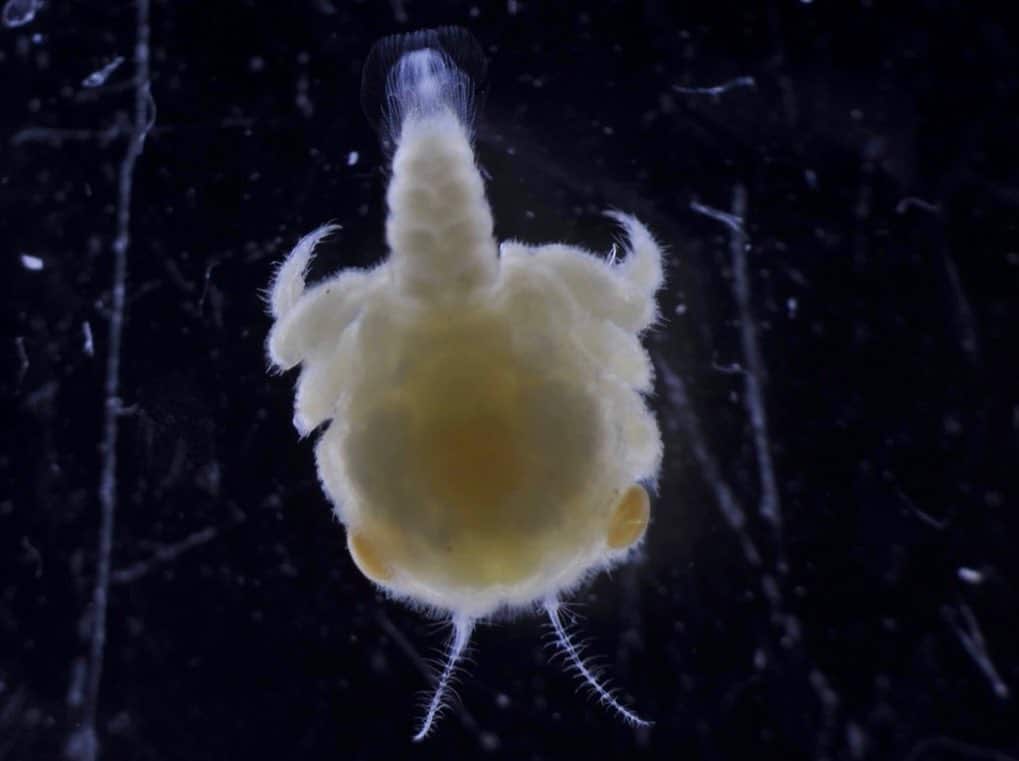
What Do Crabs Look Like?
Before discussing the crab larvae, let’s first explore those creatures. The Brachyura family includes the majority of crabs. This phrase refers to crabs’ small, concealed tails as a defining feature. However, not all crabs are members of this family.
Although some crabs look so similar that only a trained eye can tell them apart, every type of crab has a distinctive appearance that sets it apart from all other crabs. A crab’s body is often spherical or oval-shaped, occasionally smooth, and occasionally covered in protrusions of various lengths that provide protection from threats.
Those creatures have five legs on each side of the body. The crab’s front set of legs has developed into pincers that it may employ as a weapon or for self-feeding. Some crab species have pincers nearly the same size, but others, like the fiddler crab, have one pincer that is significantly bigger than the other and asymmetrical.
There are many different sizes of crabs. The pea crab is the smallest known species of crab, measuring about 0.27 inches (0.68 cm) in width. That is roughly equivalent to one aspirin pill in size.
A crab’s color is mostly determined by its exoskeleton. Depending on the type and the environment in which they reside, crabs appear in a wide range of colors. Many are red or blue tones, as well as white, yellow, brown, tan, and other hues. The color of a crab can provide some protection by acting as camouflage.
Typical Behavior of Crab Larvae
Some species of crabs are solitary animals and like to live alone. They unite with others when the mating season comes. Yet, many species live in groups, and those groups are called casts. There may be hundreds and thousands of crabs in such groups. Living in a group makes life easier because they can find their partners for mating easier and are less likely to become victims of predators.
Crabs are very shy animals, and if they feel a threat, they immediately run from danger. They prefer running over fighting because their pincers can’t really bring that much harm. Yet, some species come with very strong pincers, including the coconut crabs. Their pincers are strong enough to break a human’s finger.
Those creatures like to stay in the water and especially prefer the brackish and salt waters. Yet some species prefer freshwater and would not survive in a saltwater environment. They are spread all around the world and inhabit every ocean.
Some like to stay in the water, and others prefer to live on the shores. They look for water, especially during the breeding periods. This is because the newly hatched babies need to stay in the water for development.
What Is Crab Larvae?
Before reaching maturity, crabs go through several stages of development. Depending on the species and groups, they can have as little as 2 or as many as 9 stages. The crabs in the early stages of life have different looks and traits. The larvae stages of crabs are collectively known as Zoea. Final larvae are then created from the megalopa, right between the planktonic zoeae and benthic adult stages.
Meroplankton is made up of larval and immature stages of creatures that, when they reach adulthood, will pursue diverse lifestyles. For instance, to disperse, bottom-dwelling creatures like crabs are planktons as larvae.
The crabs, depending on the species, spend 30 to 50 days in the larvae stage. For example, the Blue crab has a zoo with a length of 31 to 49 days. As they move on to the next stage of development, they slowly develop in size.
Reproduction of Crabs
After mating, the female crabs carry the eggs with an amount of at least 800 000 to 8 000 000. The eggs are located underneath the body, right below the apron. Female crabs can keep the sperm for more than a year. Typically, those creatures mate in the fall or the beginning of winter. This habit of keeping the sperm for long periods helps them go through the winter and wait for the warmer weather. After some time, they extrude the eggs.
Males use the pincers to attract females. This especially happens often in crab species that have large-sized pincers, such as fiddler crabs. Males often fight for females. The winner gets to mate, and the loser has to go away to look for another chance.
Once the temperature increases and the eggs get fertilized, they are passed to the lower parts of the crab’s body, right underneath the apron. The apron has a curled shape and is located underneath the abdomen. It has the appendages on, and those organs are where the eggs get attached.
At first, when recently fertilized, the egg mass is orange in color. This is because it contains a high amount of yolk. Once the tiny crabs start to develop in the eggs, the color changes to brown. The yolks are eaten, and slowly, eyes are developed. Depending on the species, the crab larvae are hatched within a one to two weeks period.
When eggs get mature enough to hatch, the mother migrates towards the estuaries. There, the crab larvae are parched. Larvae are, at first, way less than 1 mm long. They are carried away by the sea current.
Only one per million crab larvae survive the development stage and become larvae, which is a very low number. This happens due to many different factors, such as threats, predators, and environmental conditions.
Crab Larvae Development
Zoeal Stage
During the development process, as we already mentioned above, the exoskeleton is shredded several times, so the body has free space to expand and grow. Since the exoskeleton cannot develop along with the crab, it must be shed typically once a year. This shields the crab for most of its life. After emerging from the exoskeleton, the crab larvae remain soft-bodied for a specific period and swell as they absorb the water.
As they absorb the water, the minerals such as calcium and salts in the seawater make the outer layer hard, which is how the new exoskeleton is created. As the crab larvae lose the unneeded water, they decrease in size, and therefore, there is some more space in the exoskeleton left for growth.
The little crab larvae swim to offshores in the intervals between exoskeleton shadings. There, the salinity level is higher. In the zoeal stage, crab larvae typically consume tiny organisms such as microscopic algae and small larvae of other creatures.
The threat to babies is high because crab larvae are vulnerable, small, and weak. The main predators for those little creatures include:
- Sheephead
- Black drum
- Red drum
- Sea trouts
- Other crabs
Megalops Stage
The next stage after the Zoeal stage is the Megalops stage. The megalops stage lasts for approximately 6 to 20 days, but this can vary and change depending on the species. In this stage, the crab larvae get the characteristics of adult crabs and get their form. The legs emerge from the sides, and the body forms. Yet, the abdomen still stays stretched behind.
In the megalopa stage, the crab larvae move towards the tidal currents and like to stay in the areas with the lowest salinity level. They look for areas where shelter is relatively easy to find, and the food they consume is abundant.
Slowly, as the crab larvae develop in this specific stage, they get the crab form, but it is very little and can reach a width of 2.
As the crab slowly grows, after shedding and molting about 18-20 times, they reach the size of 5-5.5in. Yet, the growth speed and the level of expansion greatly depend on the environment, including the temperature level, food availability, and water salinity level.
Eating Habit Of Crab Larvae In Megalops Stage
In this stage, the larvae have omnivorous eating habits.
They consume both plants and animals. Typically, in this stage, their diet includes:
- Tiny fish
- Shellfish
- Aquatic plants
Bottom Line
In this article, we explored some very interesting creatures- crabs. Crab development from birth to adulthood is complicated and includes many different stages. Yet they are united in three large groups: zoeal, megalops, and adults. In each phase, the crab larvae grow slowly and shed the exoskeleton numerous times.

Nato is a content writer and researcher with a background in psychology who’s eager to explore the wonders of nature. As a travel enthusiast and animal lover, she hopes to inspire others to discover and cherish the beauty and importance of the natural world.

